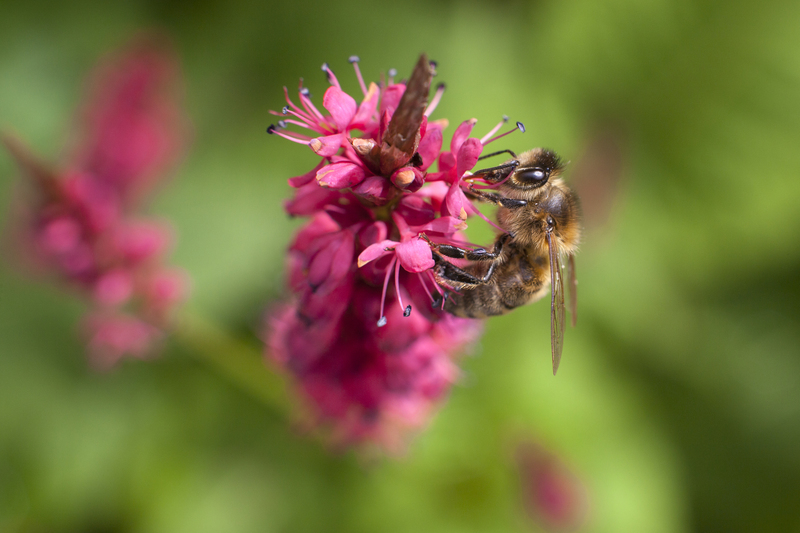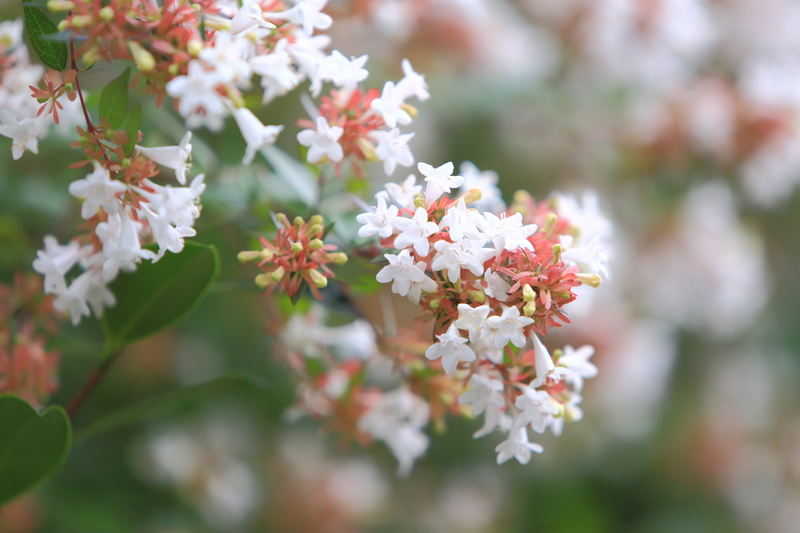Gardening Tips to Keep Your Canine Companion Happy
Posted on 16/08/2025
Gardening Tips to Keep Your Canine Companion Happy
A lush, vibrant garden is a joy for every homeowner, and for those who share space with a dog, it's especially important to create an outdoor area that's both beautiful and safe for your four-legged friend. If you're looking for ways to ensure your gardening hobby also brings happiness to your canine companion, you're in the right place. In this comprehensive article, we'll explore expert dog-friendly gardening techniques, plus provide practical advice to enhance your garden for dogs.
Why Consider Your Dog When Gardening?
Your garden is much more than a collection of plants--it's an outdoor sanctuary for you and your pet. Dogs are naturally curious; they love to sniff, dig, play, and sometimes even chew on whatever they find. Understanding your dog's behavior and instincts will help you design and maintain a space that keeps your furry friend happy, healthy, and safe. A well-planned garden can reduce stress, prevent destructive habits, and foster a deeper bond between you and your pet.

Creating a Dog-Friendly Garden: Key Principles
The golden rule of dog-friendly gardening? Balance. You want an outdoor haven that not only delights your sense of beauty but also provides enrichment--and safety--for your canine companion. Let's break down the fundamental strategies:
1. Choose Dog-Safe Plants
Many common garden varieties can be toxic to dogs. To keep your furry friend safe, prioritize non-toxic and dog-safe plants. Here are a few favorites:
- Calendula
- Sunflowers
- Marigolds
- Rosemary (Rosmarinus officinalis)
- Basil (Ocimum basilicum)
- Snapdragons
- Zinnias
- Camellias
Avoid planting lilies, azaleas, oleander, daffodils, and sago palms, as these are all toxic to dogs. For a detailed list of poisonous plants, consult the ASPCA's official website or reference a local horticultural guide.
2. Plan a Pup-Proof Garden Layout
Dogs naturally create paths in backyards, patrolling their territory or running their favorite routes. When designing your garden, work with this instinct rather than against it:
- Observe your dog's usual paths and formalize them with dog-friendly ground covers like clover or sturdy mulch.
- Establish clear boundaries using low fencing, raised beds, or dense shrubbery to protect delicate plants.
- Create "dog zones", such as a dugout area for digging, a shady retreat for napping, and open spaces for running or play.
By encouraging your puppy to use specific paths and areas, you'll preserve your flower beds and keep your garden looking pristine.
3. Use Safe Gardening Mulches and Materials
The type of mulch you use matters--cocoa mulch is toxic for dogs and should always be avoided. Instead, try these dog-safe options:
- Pine bark
- Cedar mulch
- Natural wood chips (avoid chemical treatments)
- Pea gravel or smooth stones for designated play areas
Ensure all materials are free from sharp edges or toxic chemicals that could harm your dog if chewed or swallowed.
4. Prioritize Shade and Water
Just like people, pets need protection from the sun. A canine-friendly backyard always incorporates ample shade:
- Install a crisp canvas awning, place a doghouse or pergola, or plant shade trees with non-toxic canopies such as maple or dogwood.
- Always provide a fresh, accessible water source outdoors, such as a dog water fountain or a shallow bowl refilled daily.
Not only will this keep your dog comfortable in summer, but it also encourages healthy outdoor activity.
5. Make Outdoor Enrichment a Priority
A bored dog is more likely to dig up beds or chew on prized plants. Enhance your dog's garden happiness with:
- A dedicated sandbox or digging pit for entertainment
- Agility structures such as tunnels, platforms, or jump hoops (using dog-safe materials)
- Plenty of toys--especially durable chew items and balls
- Scent gardens with safe, aromatic herbs like lavender, rosemary, and thyme
Providing ways for your dog to exercise, play, and mentally engage will result in fewer unwanted behaviors and a happier pup.
Landscape Design for Happy Dogs and Beautiful Gardens
Merging aesthetics and canine needs requires a few clever landscaping strategies. Use these design principles to create a space that's both visually stunning and ideal for dogs in the garden:
Incorporate Durable, Pet-Friendly Surfaces
Lawns, while inviting, can be high maintenance--especially with dogs who dig or run laps. Explore these pet-proof ground cover options:
- Creeping thyme - tough, fragrant, and safe for paws
- Clover - soft, drought-resistant and resilient to trampling
- Artificial turf - low-maintenance, though may heat up in summer
- Pea gravel or mulched trails - ideal for pathing and play zones
Establish Canine Paths and Play Trails
Dogs are creatures of habit, and they love following "patrol routes." Reinforce these trails with flagstone paths, stepping stones, or wood chips for durability.
Safety by Design
- Install secure fencing high enough to dissuade jumpers; bury the bottom if you have a digger.
- Make gates self-closing or add a lock to prevent adventurous escapes.
- Keep compost bins and garden tools securely shut away.
A secure environment ensures your dog can enjoy the garden without risk of getting lost or ingesting hazardous items.
Install Dog-Friendly Water Features
Nothing beats a water-loving dog's delight at a shallow pond or splash area. Consider adding a running fountain, splash pad, or baby pool--just be sure water sources are shallow and easy to exit.
Maintaining a Safe and Healthy Garden for Dogs
Avoid Hazardous Chemicals
Pet-friendly gardening means omitting harmful substances. Steer clear of:
- Herbicides and pesticides (especially slug pellets and rodenticides)
- Weed killers containing glyphosate or 2,4-D
- Fertilizers with blood meal, bone meal, or cocoa shell which attract pets but are toxic
Choose organic gardening products or natural pest controls such as neem oil or diatomaceous earth (safe in small, controlled quantities). Store all chemicals out of reach.
Practice Regular Yard Checks
Get in the habit of walking your garden daily. This allows you to:
- Spot and remove toxic mushrooms or weeds that pop up overnight
- Repair holes or damage to fences and play zones
- Pick up sharp sticks, garden tools, and trash before your pup finds them
- Monitor for standing water to reduce mosquito risks
Proactive maintenance keeps your garden safe, clean, and enjoyable for all.
Dog-Friendly Gardening by Season
Spring
- Check for bulb plants such as tulips or daffodils (which are toxic if dug up and chewed)
- Apply only pet-safe fertlizers as you refresh beds
- Encourage new grass or clover to fill in bare patches in dog paths
Summer
- Maintain fresh, shaded water sources
- Use natural mosquito repellents, avoiding DEET or permethrin sprays
- Trim back overgrown shrubs to limit hiding spots for ticks or wildlife
Autumn
- Avoid using leaf piles as play areas if they might contain mold or sharp sticks
- Check for fallen fruit that may ferment and become a hazard
- Plant cool-season, dog-safe ground covers
Winter
- Rinse paws after walks to remove ice-melting chemicals
- Offer a weatherproof dog shelter or insulated bedding in outdoor areas
- Monitor for frozen water bowls and ice hazards
Training Tips: Help Your Dog Respect the Garden
A happy, well-behaved dog is the key to harmonious gardening. Use positive reinforcement to guide your furry friend:
- Teach "leave it" and "off" cues to deter digging or plant-chewing
- Reward playing in designated zones or sandbox with treats and praise
- Redirect natural instincts--such as digging or chasing--to appropriate areas
- Supervise until habits are established, then gradually allow more freedom
Consistency and patience are crucial. By setting boundaries early, you'll protect both your new plants and your pet.

Gardening with Dogs: Frequently Asked Questions
What should I avoid growing in a dog-friendly garden?
Avoid lilies, daffodils, sago palms, foxglove, digitalis, tulips, and azaleas--these are highly toxic to most dogs.
What ground coverings resist dog wear and tear?
Clover, creeping thyme, buffalo grass, or artificial turf are great for heavy-use areas. Mulch or pea gravel paths are also effective.
How can I prevent my dog from digging up garden beds?
- Provide a digging area such as a sandbox
- Use raised beds with borders
- Offer lots of toys for engagement
- Supervise and train with positive reinforcement
Are fertilizers safe for dogs?
Use natural, pet-safe fertilizers and compost. Avoid bone meal, blood meal, and synthetic chemical fertilizers, as these can be harmful if ingested.
Conclusion: A Joyful Garden for Both You and Your Dog
With thoughtful planning, you can cultivate a stunning dog-friendly garden that provides endless enjoyment for you and your canine companion. From avoiding toxic plants to creating play pathways and prioritizing safety, these tips will ensure a happy, healthy garden for your dog. Embrace gardening as a way to bond, explore, and share the great outdoors with your cherished pet--turning every day in your backyard into a new adventure.
Happy gardening, happy dog!

